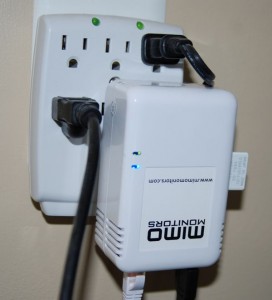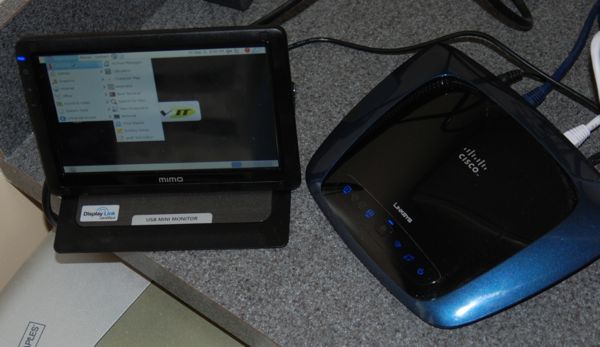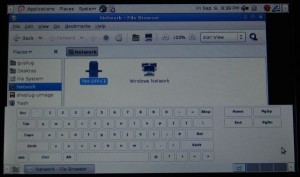MimoPlug: The touchscreen is a feature, not the main driver

REVIEW: To me, plug computers are exciting because they can perform low-to-mid-level computational functions at an extremely low overall energy cost. They are sort of like fanless PC's of the smallest order...General purpose computers that have the small physical and ecological footprints of embedded systems without the usage case limitations.
A couple of months ago, the people at Mimo Monitors released a bundle called MimoPlug that combined a touchscreen version of their famous USB mini-monitor with an equally miniature plug computer based upon Marvell's SheevaPlug platform that booted Debian off of an included SD card.
I was naturally intrigued by this package because:
1.) Mimo Monitors are cool.
2.) Ultra energy efficient computers are cool.
3.) Mimo looked to be taking a more PC-like approach to plug computing than other companies had previously done.
So the people at Mimo were nice enough to let me try one of these systems for myself, and I quickly learned that despite the touchscreen monitor and touchscreen Linux distro it ran, this is still VERY MUCH A PLUG COMPUTER.
That is to say, you're going to want to access it remotely with a nice, solid keyboard, set up your desired touchscreen applications, and then let it do its touchscreen thing.

I say this for several reasons. First, the default touchscreen keyboard is seismically slow. If you tap a letter on the on-screen keyboard, it takes no fewer than three seconds for the input to be recognized. Then when you log in, you are presented with the option of having a much more responsive persistent keyboard onscreen. But with it up, it obscures just about half of the 7" screen, and sometimes you can't see what you're typing.
Secondly, it's set up with a standard gnome desktop that responds to touch input, yet is not optimized for a touchscreen.
You know how your standard desktop OS (no matter which one it is) pushes all the important stuff to the edges of the screen to give you maximum workspace? Imagine that with a touchscreen, where you have to accurately touch the tiny margins where the edge of the screen hits the monitor bezel to pull up your important menus...It's pretty dumb.

So even though the actual GUI runs at a fast clip and reacts much, much more agreeably than the onscreen keyboard, it's not touch-friendly by default at all.
I tried my best to do everything through the GUI, as I thought it was designed to be used, but after pecking through the tiny keyboard for a while, I found myself desperately wishing I had a Mini USB keyboard (because that was the only free port left on the plug).
Call me old fashioned, but how can you base a system on a Linux distro and then make it extra difficult to use the command line?
I got the feeling that this isn't really how the system should ideally be run, and the existence of an onboard GUI is more or less a feature meant to be exploited by graphical applications rather than being the main driver of the system. It's just too clunky and weird to be primary input.

Mimo says the plugs are "great for a range of cloud computing applications -- from retail kiosks and application stations, to manufacturing and remote network monitoring." So I came away with the feeling that even though this has all the trappings of a tiny touch PC, it's really best suited as the embedded controller of single-purpose touch-based software.
For home users, this could mean management for network audio and entertainment systems, home automation (I imagine graphical dimmer switches), serving network attached storage or printers, or home security.
And of course, there's always using it to water your plants.
The package I played with costs $419 at retail. It seems kind of steep, but the expense is somewhat offset by the fact that you can use the 7" (800 x 400) touchscreen Mimo monitor with whatever PC you want to. Sold individually, the monitor is $139, exactly one third of the price of the whole package, and if purchased individually through NewIT (Mimo's UK partner), the plug and GUI SD would cost $185. So if you think plug computing is cool, too...you can assemble this setup yourself and save a couple of bucks in the process.